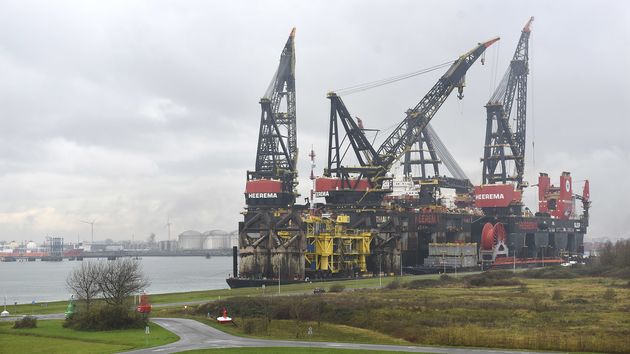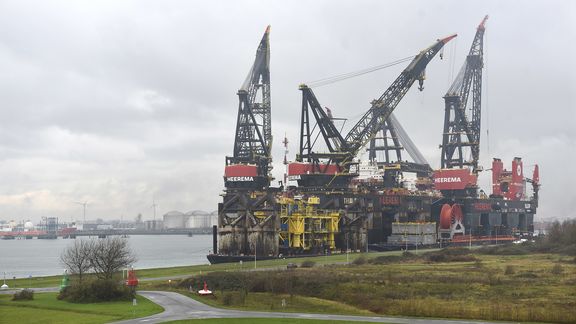Heerema's offshore vessels successfully plugged in on shore power

Heerema and the Port of Rotterdam Authority are proud to announce that Heerema Marine Contractors’ largest crane vessels, Sleipnir and Thialf have officially switched from using their engines to using shore power.
The successful commissioning of the shore power project is the result of a partnership between Eneco, the Port of Rotterdam Authority and Heerema with the support of the Gemeente Rotterdam. There is a global demand to reduce our impact on the planet and the partners involved in the shore power project are all dedicated to supporting the energy transition.
Shore power
Shore power enables vessels to switch off their engines and plug into the electrical grid for their energy supply. The connection built by Heerema, Eneco and the Port of Rotterdam Authority will supply Sleipnir and Thialf with sustainable energy that will originate from wind turbines located on the headland nearby or from another renewable source should it be required.
Koos-Jan van Brouwershaven, Heerema’s CEO said “we are proud to successfully plug-in Heerema’s vessel to shore power. This project is the result of excellent collaboration and hard work from everyone involved. Heerema is committed to sustainability and we demonstrated this dedication by becoming Carbon Neutral in 2020. Each year from now to 2026 we have outlined our targeted emission reductions, and by plugging-in shore power we reduce our overall impact by 5%, equivalent to 5,000 diesel cars, which fulfills our first year’s target! We are looking forward to introducing more sustainability measures to continue this journey.”
The shore power connection has a 20 MW capacity, which is the energy equivalent of around 15,000 homes. As the vessels turn off their engines when connected to shore power, virtually all emissions and particulate matter is prevented because no more marine gas oil or LNG in Sleipnir’s case will be used. This action has direct benefits for local residents with air quality improvements and a reduction in CO2. Also, without the engines running there is a significant reduction in noise nuisance.

Photo: Ries van Wendel de Joode
When Heerema's vessels turn off their engines when moored in the port of Rotterdam for a standard repair and maintenance period there is a saving of 15,000 metric tons of CO2, 20 metric tons of particulate matter, 5 metric tons of sulfur and a significant amount of nitrogen– comparable to the annual emissions of 5,000 diesel cars.
